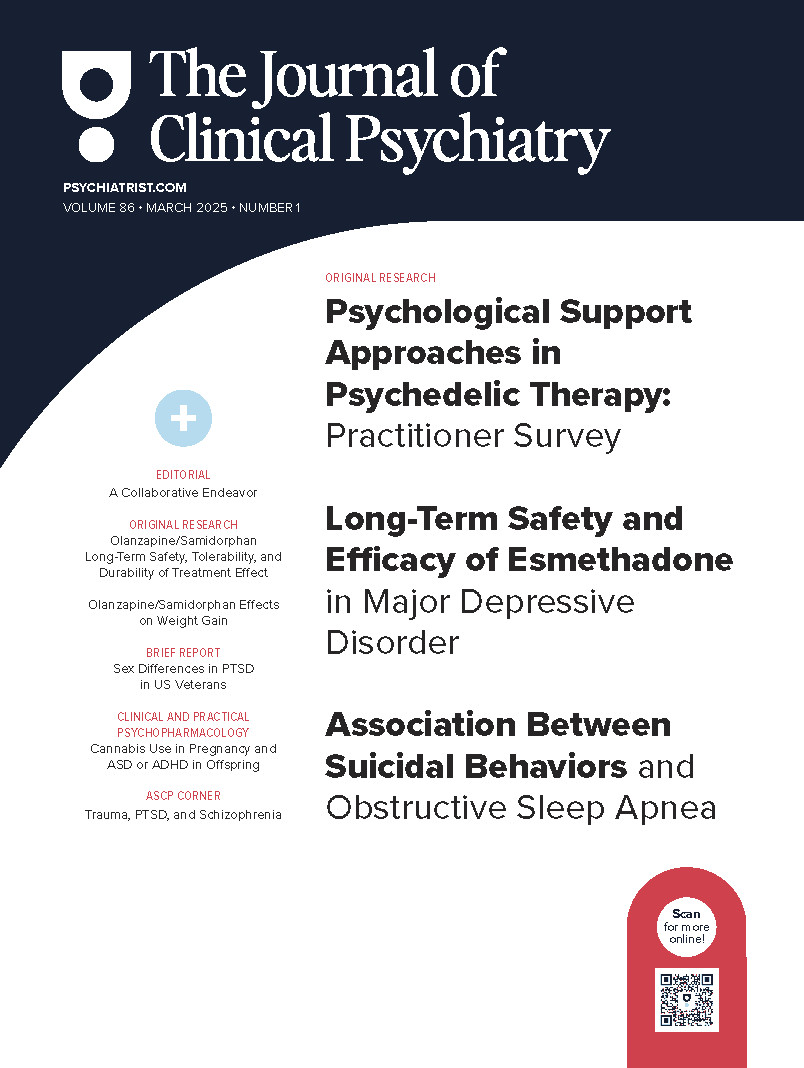Objective: There has been increasing concern about the high risk of suicide among US veterans, especially those with posttraumatic stress disorder (PTSD). Among those at greatest risk are veterans recently discharged from inpatient or specialized intensive treatment programs, but little is known about clinical correlates of suicide attempts among such veterans and this information that might facilitate prevention efforts.
Methods: National program evaluation data were obtained at program entry and 4 months after discharge from 30,384 veterans from 57 sites (fiscal years 1993-2011) who were discharged from specialized intensive PTSD programs nationally in the Veterans Health Administration. Rates of attempted suicide were 10.6% in the 4 months prior to admission and 3.4% in the 4 months following discharge. Bivariate analyses and multivariable logistic regression were used to identify baseline characteristics, especially PTSD symptoms, associated with suicide attempts prior to admission and after discharge. Further analyses examined the association of changes in symptoms and other outcomes with reported post-discharge suicide attempts.
Results: Suicide attempts both prior to admission and after discharge were associated with psychiatric and substance abuse comorbidity and especially suicidal ideation and violent behavior. Clinical changes independently associated with post-discharge suicide attempts included increased suicidal thoughts (β = 0.96, P < .001), violent behavior (β = 0.49, P < .001), and alcohol use (β = 0.56, P < .001).
Conclusions: In this longitudinal study, violent behavior assessed at admission and as a change measure after discharge, along with suicidal ideation and alcohol use, were associated with suicide attempts. Additional therapeutic attention to violent behavior and alcohol use, quite likely reflecting underlying impulsivity, may help reduce the risk of suicide attempts.
Continue Reading...
Members enjoy unlimited free PDF downloads as part of their subscription! Subscribe today for instant access to this article and our entire library in your preferred format. Alternatively, you can purchase the PDF of this article individually.
Please sign in or purchase this PDF for $40.00.
Already a member? Login




